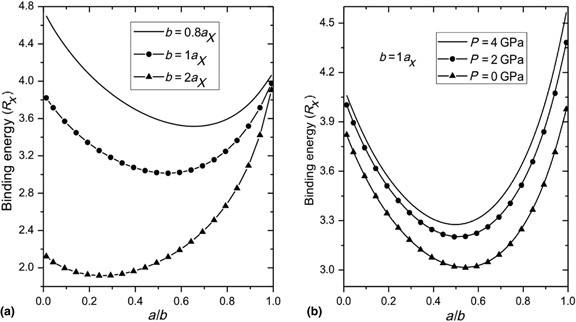Article contents
Pressure effect on an exciton in a wurtzite AlN/GaN/AlN spherical core/shell quantum dot
Published online by Cambridge University Press: 25 April 2018
Abstract

We have studied the effect of hydrostatic pressure on the confined exciton in a spherical core–shell quantum dot. Using a simple variational approach under the framework of effective mass approximation, we have computed the excitonic binding energy as a function of the shell thickness under the applied hydrostatic pressure. Our results show that the ground state binding energy of exciton depends greatly on the shell thickness, which tends to the two-dimensional limit of 4RX, when the ratio a/b tends to unity. The numerical calculations also suggest that the applied hydrostatic pressure favors the attraction between electrons and holes so the excitonic binding energy increases when pressure increases.
- Type
- Research Letters
- Information
- Copyright
- Copyright © Materials Research Society 2018
References
- 7
- Cited by





